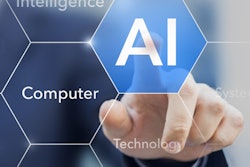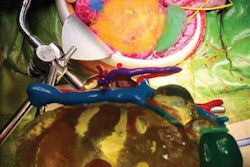Dear Imaging Informatics Insider,
Instead of replacing radiologists, artificial intelligence (AI) technology continues to show potential as an adjunctive tool to help improve their performance in a variety of clinical applications. For example, researchers from University Medical Center Utrecht in the Netherlands are reporting that a deep-learning algorithm can improve the identification of functionally significant coronary artery stenosis on coronary CT angiography compared with just visual assessment alone. They believe that their method could potentially decrease the number of patients who need to receive invasive angiography.
Not everybody believes that AI is ready for routine adoption in clinical practice, however. Yes, algorithms can be trained to work well with consistent, standardized data, but that performance may not be maintained when utilized in different settings, according to a presentation at the recent congress of the European Society of Medical Imaging Informatics (EuSoMII) in Rotterdam, the Netherlands.
In another talk at EuSoMII 2018, Dr. Mathias Prokop of Radboud University Nijmegen in the Netherlands told attendees that AI will create the space and time for radiologists to focus on what really matters. So far, however, few AI products do as they promise, according to Prokop. Click here for our report.
The next generation of x-ray equipment with embedded AI detection algorithms is likely to hit the market in 2019, and institutions in Central and Eastern Europe will be early adopters, according to Simon Harris of market research firm Signify Research. Click here to learn why AI has the potential to have a material impact on the quality of radiology services.
A new cardiac training scheme for French radiology residents will feature a number of enhancements related to AI, dose optimization, and structured reporting. Click here for our interview with Dr. Alexis Jacquier, PhD, vice president of the Société Française d'Imagerie CardioVasculaire.
A new nonprofit association aimed at improving availability of radiology AI technology in France was launched at Journées Francophones de Radiologie Diagnostique et Interventionnelle (JFR) 2018. Click here for all the details.
Radiomics is poised to be a pivotal process for developing new diagnostic imaging strategies and therapies, according to another presentation at JFR 2018.
Structured reporting is overblown, says Dr. Paul McCoubrie of Southmead Hospital in Bristol, U.K., in his final batch of 30 "golden rules of radiology" article on AuntMinnieEurope.com. Click here to find out what else is on his list. Also, a pilot study has begun in the U.K. to assess the use of clinical decision-support software based on referral guidelines from the Royal College of Radiologists.
In his latest column for AuntMinnieEurope.com, Dr. Hugh Harvey delves into the challenges researchers face in acquiring enough high-quality data for training radiology AI algorithms.
If you have any tips or suggestions for topics you'd like to see covered in the Imaging Informatics Community, please feel free to drop me a line.



















